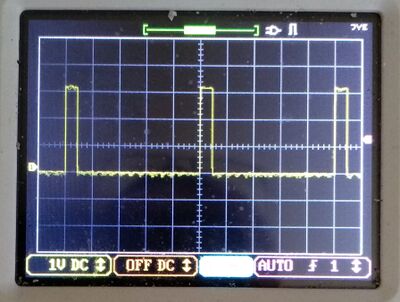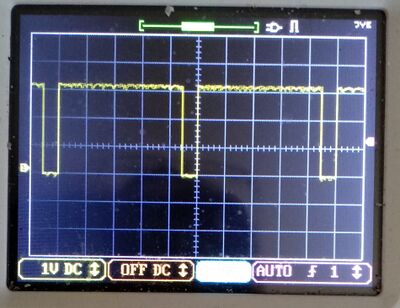Difference between revisions of "STM32 Pulse Width Modulation"
Jump to navigation
Jump to search
| Line 2: | Line 2: | ||
[[STM32]] [[MCU]]s comes in a truly baffling number of different configurations, but they all consist of one or more CPU cores, a number of buses and a number of peripherals. Some of these peripherals are timers. The number of available timers depend on the [[STM32]] family. The low end devices might have as little as 4, while the higher end ones can have 16 or more. | [[STM32]] [[MCU]]s comes in a truly baffling number of different configurations, but they all consist of one or more CPU cores, a number of buses and a number of peripherals. Some of these peripherals are timers. The number of available timers depend on the [[STM32]] family. The low end devices might have as little as 4, while the higher end ones can have 16 or more. | ||
| − | == What is Pulse | + | == What is Pulse Width Modulation (PWM) == |
| + | |||
| + | {| | ||
| + | |[[File:10 percent duty cycle.jpg|400px|10% duty cycle]] | ||
| + | |[[File:90 percent duty cycle.jpg|400px|90% duty cycle]] | ||
| + | |} | ||
Revision as of 04:12, 12 September 2021
STM32 MCUs comes in a truly baffling number of different configurations, but they all consist of one or more CPU cores, a number of buses and a number of peripherals. Some of these peripherals are timers. The number of available timers depend on the STM32 family. The low end devices might have as little as 4, while the higher end ones can have 16 or more.
What is Pulse Width Modulation (PWM)

|

|